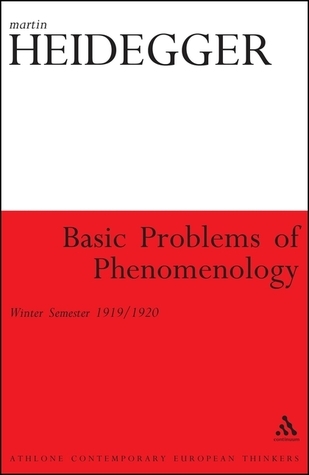What do you think?
Rate this book


208 pages, Paperback
First published January 1, 1927
We must now specify more particularly this distinctio or this compositio that subsists between essentia and existentia in the case of the ens finitum and see how the distinctio is formulated, in order to obtain from this a clearer view of the sense of essence and existence and to see the problems that emerge here. Notice must be taken--we have already touched on this in our presentation of Kant--that the possible, res, quidditas, also has a certain being: to be possible is different from to be actual. If reality and possibile coincide, it is worthy of note than in Kant reality and possibility belong to different classes of categories, quality and modality. Realitas, too, is a specific mode of being of the real, just as actuality is that of the actual.Look perplexed. Look very perplexed. In general, I think that if it can't be stated clearly, it shouldn't be stated at all.